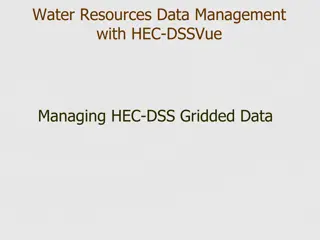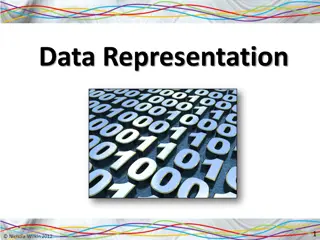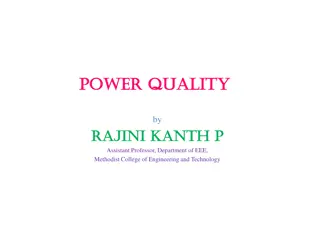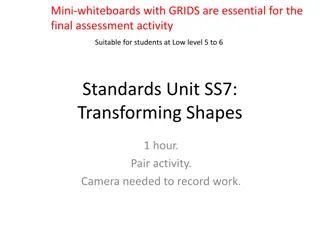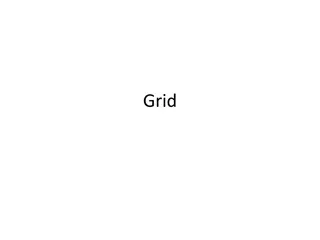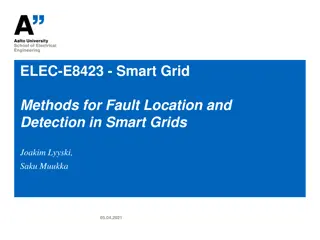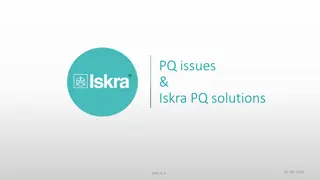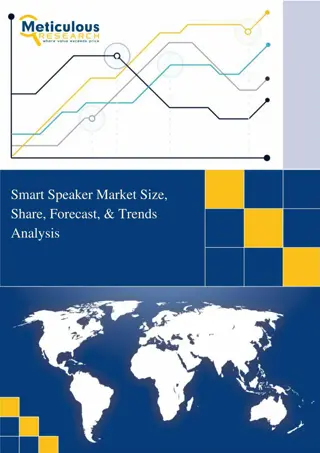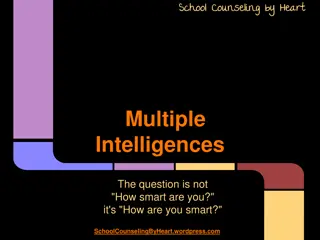Understanding Power Quality Issues in Smart Grids
Power quality issues in smart grids are important considerations due to the impact of modern electronic devices and renewable energy sources. This article discusses the causes, effects, and solutions related to voltage fluctuations, sags, swells, and unbalance in three-phase systems. Various mitigation techniques like Automatic Voltage Regulators, Static VAR Compensators, and Static Compensators are explored to maintain power quality standards in smart grids.
Download Presentation

Please find below an Image/Link to download the presentation.
The content on the website is provided AS IS for your information and personal use only. It may not be sold, licensed, or shared on other websites without obtaining consent from the author. Download presentation by click this link. If you encounter any issues during the download, it is possible that the publisher has removed the file from their server.
E N D
Presentation Transcript
ELEC-E8423 - Smart Grid Power Quality Issues in Smart Grids Muhammad Fazeel, Zubair Hafeez
Introduction Scope: To discuss the power quality issues, their cause, impacts and possible solutions. Power Quality encompasses parameters defining power supply properties under normal conditions, including continuity and voltage characteristics (magnitude, frequency, waveform, etc.). Modern grid is penetrated by renewable energy sources and power electronic converters. Power quality issues in smart grids are often associated to presence of electronic devices and increasing absence of rotating mass. Good power quality is the basic requirement of any power system as it makes the system reliable and protects the equipment of end users from malfunctioning, which otherwise can happen. Page 2
Power Quality Power Quality (PQ) refers to as "any power problem manifested in voltage, current, and frequency deviations that results in the failure or maloperation of end user's equipment (Jolhe, Karalkar, Dhomane, 2016) . It is a significant concern for utilities, end users, manufacturers, and all customers alike. Modern electronic devices like microprocessors, telecommunications equipment, and sensitive computerized devices are particularly vulnerable to PQ issues, making it a critical concern for both power suppliers and customers. PQ issues relate to the following three parameters: Voltage Frequency Harmonic distortion Page 3
Power quality issues related to voltage Issues Explanation Causes Effects Voltage sags/dips Sudden reduction of the voltage magnitude lasting from half cycle to few seconds. Switching operations, like disconnection of the supply or starting of large motor loads, or any type of faults. Malfunctioning of PLCs and variable speed drives, reduction in performance of motor and flickering in illumination devices. Rise in the voltage magnitude. Light loading conditions, sudden disconnection of heavy load. Damage of sensitive equipment, insulation failure of induction motor. Voltage swells Systematic or series of random changes in the voltages. Load changes, generation changes, arc furnaces. Malfunctioning of protection devices and degradation of performance of electronic devices. Voltage fluctuation and flicker Page 4
Power quality issues related to voltage Three phase voltages differing in magnitude or normal phase difference. Uneven distribution of single phase load, large single phase loading e.g. one of the fuse of 3 phase motor doesn t operate. Increased vibration and mechanical stress resulting in overheating of motor. Unbalance Complete loss of supply. It occurs when the supply voltage decreases less than 10% from its original value. Line faults, damages to transmission lines. Loss of supply to sensitive loads. Interruption Solution Automatic Voltage Regulators (AVR): They continuously regulate the voltage around a preset value. Static VAR Compensator (SVC): It maintains the voltage at the point of common coupling at a pre-defined reference voltage through feedback control. Target is achieved through reactive power compensation by capacitive and inductive branches. Static Compensator (STATCOM): It regulates the voltage by injecting or absorbing the reactive power. It is converter based, thus have faster control than SVC. Other technologies: Fixed series capacitors, thyristor controlled series capacitors, static transfer switch, synchronous condenser, etc. Page 5
Power quality issues related to frequency Issue Explanation Causes Effects Frequency Variations Frequency variations occur when the power supply system deviates from its standard frequency, usually 50 Hz or 60 Hz, impacting electrical equipment performance. Imbalances in generation and load, grid disturbances, demand fluctuations, faults in the power system, and integration of renewable energy contribute to frequency variations. Frequency variations cause power system instability, affecting grid synchronization, disrupting sensitive equipment, causing malfunctions, reducing efficiency, and potentially damaging electrical devices. Solutions Energy Storage: To provide inertia to system through storage devices like batteries. Supercapacitors are used to respond to sudden fluctuations. Spinning Reserves: Extra power generating capacity which is already synchronized to the system. In case of any power plant outage, spinning reserve can compensate the gap in generation Page 6
Power quality issues related to harmonics Issue Explanation Causes Effects Harmonic Distortion Harmonic distortion arises from non-sinusoidal components in power supply waveforms, impacting electrical power quality. Nonlinear loads like electronic devices, variable frequency drives, and renewable energy sources introduce harmonics into the network, along with power converters and rectifiers. Harmonic distortion can cause overheating in transformers and motors, energy losses, communication interference, and equipment malfunctions, reducing power distribution system efficiency. Solutions Passive Filters: They are designed to block specific harmonic frequencies. Active filters: They inject equal and opposite frequencies to mitigate the harmonics. Smart Impedance: Smart Impedance eliminates the need for precise filter tuning by automatically adjusting to system s requirements. It provides infinite impedance to source voltage harmonics. Page 7
Conclusions Smart grids encounter significant power quality challenges, particularly concerning voltage fluctuations, frequency variations, and harmonic distortions. Addressing power quality issues in smart grids is crucial for ensuring reliable and efficient electricity delivery, preventing equipment damage, and maintaining grid stability. Implementing effective solutions such as FACTS technologies, energy storage technologies and filters is essential for mitigating power quality concerns in smart grid systems. Page 8
References 1. Laskar, S.H., 2012, September. Power quality issues and need of intelligent PQ monitoring in the smart grid environment. In 2012 47th International Universities Power Engineering Conference (UPEC) (pp. 1-6). IEEE. 2. Jolhe, S.P., Karalkar, M.D. and Dhomane, G.A., 2016, November. Smart grid and power quality (PQ) issues. In 2016 online international conference on green engineering and technologies (IC-GET) (pp. 1-3). IEEE. 3. Prathibha, E. and Manjunath, A., 2014. An overview of power quality issues in smart grid. Dept. Int. J. Innov. Res. Adv. Eng.(IJIRAE), 1, pp.294-298. 4. Luo, A., Xu, Q., Ma, F. and Chen, Y., 2016. Overview of power quality analysis and control technology for the smart grid. Journal of Modern Power Systems and Clean Energy, 4(1), pp.1-9. 5. Singh, B., Chandra, A. and Al-Haddad, K., 2014. Power quality: problems and mitigation techniques. John Wiley & Sons. Page 9




